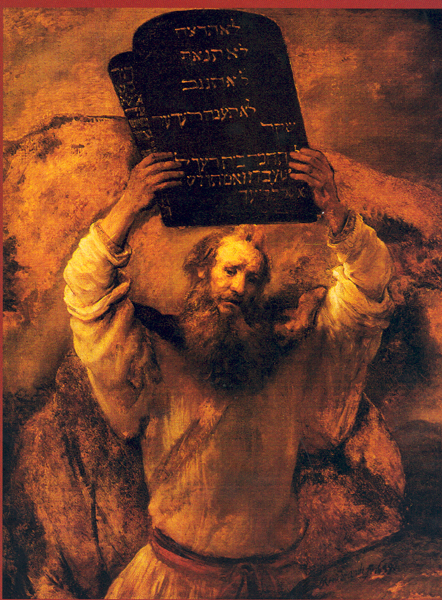Image Details

“Inscribed with the finger of God,” the two stone tablets bearing the Ten Commandments have created a dramatic focus for many images of Moses descending Mount Sinai, including Rembrandt van Rijn’s 17th-century rendition of “Moses Breaking the Tables of the Law.” Here Moses holds above his head two large black slabs, one partly hiding the other. The front slab is inscribed with the last five commandments, in square Hebrew letters, according to the traditional biblical text.
These slabs are reminiscent of engraved stone tablets, with the commandments in Hebrew, that hung in Dutch churches after the Reformation. Similar tablets were attached to the walls of British churches, but the texts were often in English. Although Rembrandt and other artists have created easily readable images, archaeological evidence suggests the tablets envisioned in the biblical text would have had a strikingly different appearance.
